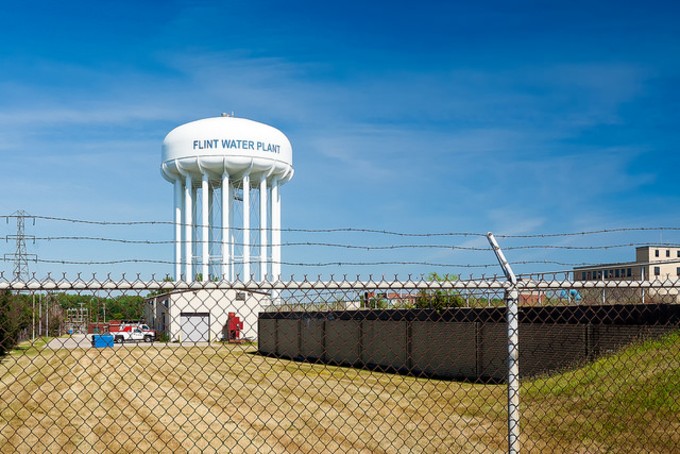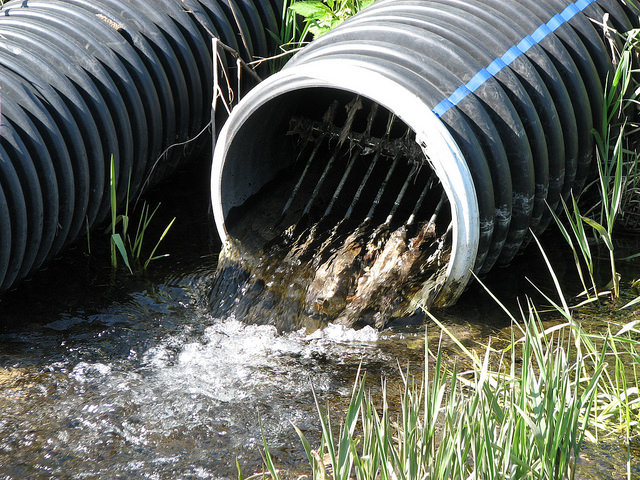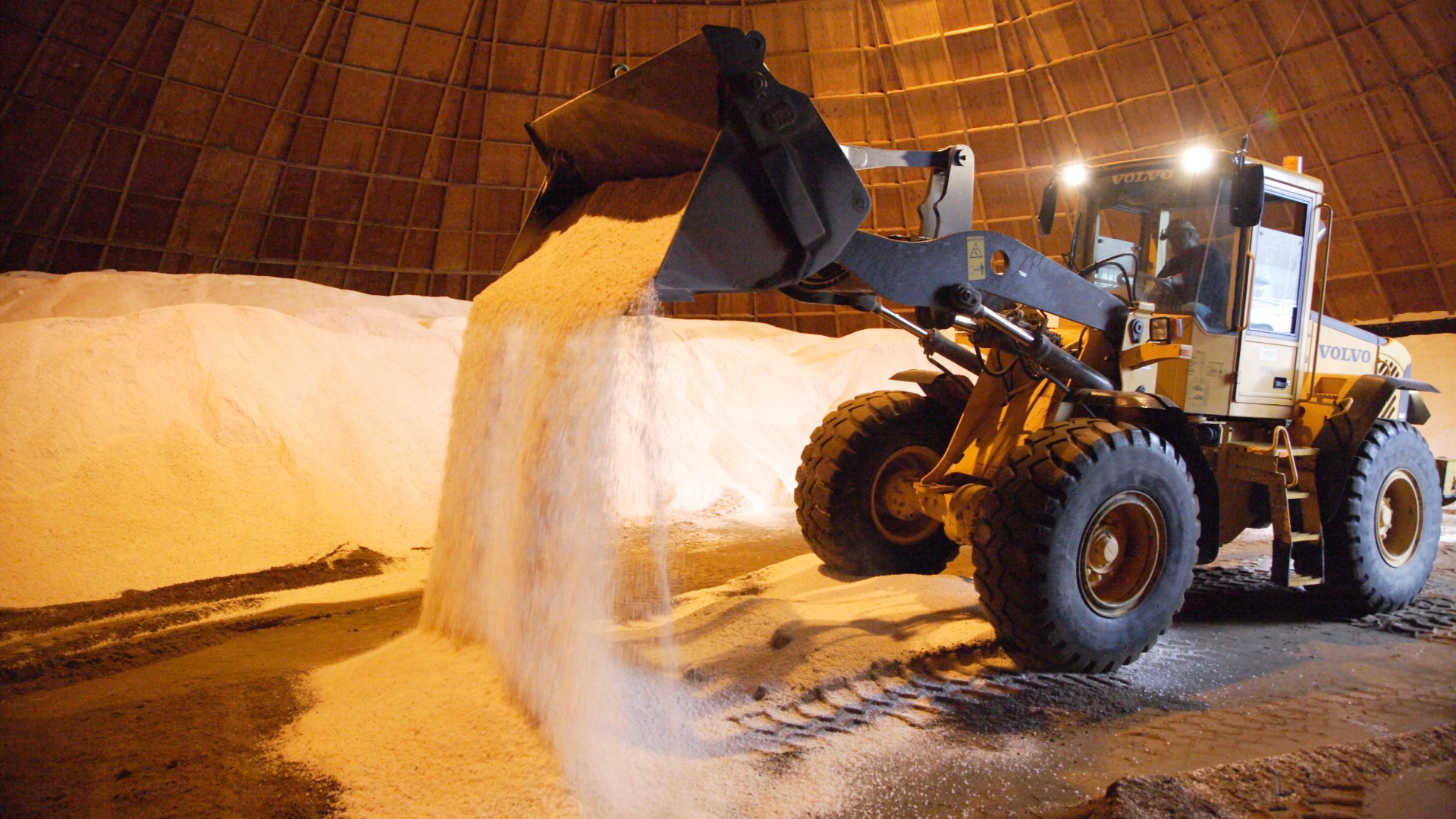Gene Likens has been studying forest and aquatic ecosystems for more than half a century. In that time he’s seen a change in the chemistry of our surface waters — including an increase in the alkalinity and salinity of waterways — something he and his colleagues have dubbed “freshwater salinization syndrome.”
Likens coauthored a report published last month that found that not only is salinity increasing in many surface waters, but when you add salt to the environment it can mobilize heavy metals, nutrient pollution and other contaminants that are combining to create new “chemical cocktails” in rivers, streams and reservoirs.
These cocktails can be a danger to our drinking water, wildlife and riverine ecology. And they’ve already contributed to a public health crisis in at least one U.S. city.
“I didn’t expect the massive scale of change across the lower 48 that we found — or the magnitude of change,” says Likens, who is president emeritus of the Cary Institute of Ecosystem Studies and a distinguished research professor at the University of Connecticut.
Impacts
Lead poisoning was the top headline from the recent water crisis in Flint, Michigan, but salt played a key role in the tragedy.
When the city switched sources of water to the Flint River, the water had a much higher salinity because of runoff from road salts, which, without proper treatment, increased the corrosivity of the water. “That change in the chemistry of the water flowing through the pipes liberated lead from the pipes or lead-soldered connections,” explains Likens. Lead was the villain, but salt was its enabler.

Flint isn’t the only metropolitan area at risk from salinity-induced water concerns. The researchers also studied public water supplies in the Washington, D.C.-Baltimore area and found “some of those areas are increasing in salt content rather seriously,” says Likens. “It’s not just some little stream in your backyard along the interstate highway. It can be very widespread.”
Sujay Kaushal found this out firsthand. Kaushal, a professor of geology at the University of Maryland and lead author of the study, turned on his tap at his Maryland home in 2015 to find a blackish-colored water coming out. He realized that increased salinity in the water was causing manganese, a neurotoxin, to leach from the pipes in neighborhood homes.
The problem isn’t isolated to a few cities either.
An earlier study by Kaushal, Likens and colleagues, published in January 2018, analyzed data dating back a century in different localities and found freshwater salinization syndrome had become widespread. The researchers found that 37 percent of the watersheds in the lower 48 had a significant increase in salinity, and 90 percent for alkalinity. Their most recent study, from December 2018, took the research even farther, looking at rivers across North America and Europe, but also a few sites around the world, including in Iran, Russia and China.
“What was surprising was that in all of these different world regions there’s well-known waterways that show this freshwater salinization syndrome occurring,” says Kaushal. “Even our Great Lakes show these patterns of increasing salts and the Great Lakes contain about 20 percent of the world’s fresh water.”
Salt on its own has been shown to be problematic. Too much of it in the water can be a health risk for someone with hypertension, says Likens. And salts washing off roadways have been shown to damage or kill vegetation. It can also seep into drinking water wells. High enough levels of salinity can be toxic to some aquatic life, too, says Likens.
Other new research has honed in on this threat from salt. “Increased salinity in freshwater systems is expected to cause extensive changes in biota and potentially in ecological function, and some losses of freshwater resources,” freshwater scientist John R. Olson from California State University Monterey Bay wrote in a recent study. His work found that by the end of the century, half the country’s streams could have an increase in salinity of 50 percent.
But that’s not the only concern.
Salts, Kaushal and his colleagues found, can liberate heavy metals and other elements in soils and concrete surfaces, which can be more dangerous when mixed together than any one of them singly. Salts can also mobilize nitrates, stimulating harmful algal blooms that threaten the health of fish and other marine organisms.
Kaushal and his colleagues analyzed streams near the University of Maryland after a snowstorm and found spikes in the concentration of metals like copper, zinc, manganese and cadmium.
And after a storm salt concentrations can stay elevated for months, increasing the amount of time that the salts can draw these chemical cocktails out of the soil and into waterways.
Sources of the Problem
Where Likens lives in the White Mountains of New Hampshire, the roads in winter are often busy with visiting skiers traveling up from nearby Boston, Hartford or New York. To keep the traffic safely moving in wintry conditions the roads are often doused with salt — a lot of it. He’s found that at times local municipalities have used up to a ton of salt per road mile per day.
Generous servings of road salt are common across the Northeast and upper Midwest and are one of the biggest contributors to salinization of waterways in those parts of the country, but the researchers found other kinds of salts, not just the commonly used sodium chloride, also contribute to the increase of salinity in waterways — things like fertilizer runoff, water softeners, fracking brine and sewage discharges.

“There’re just a variety of things that we humans add to the surface that eventually find their way to streams and lakes and reservoirs and increase their salinity,” says Likens.
The weathering of concrete infrastructure like our bridges and roads from acidic rain (which has been reduced but not eliminated) also contributes to increases in salinity and alkalinity.
So too does building impervious surfaces, such as roads and parking lots.
The researchers found that in the Baltimore area an increase of one percent in the amount of impervious surfaces caused a 10 percent increase in salinity. Chemicals and salts that would have been absorbed by soils instead ran off those hard surfaces and into waterways.
All indicators are that the salinity problem is getting worse over time. “The graphs consistently are increasing,” says Likens. “Not every stream shows the effect, but the vast majority do.”
Solutions
The new research raises more questions than it answers, including what the impacts of these chemical cocktails may be and how we can manage them to ensure safe drinking water and a healthy environment.
The study recommends that we manage the problem by “considering chemical mixtures and potential interactive effects as a syndrome of multiple stressors instead of single contaminants.”
That’s easier said than done.
“We have regulations and management strategies which are focused on a single contaminant and it’s almost like our brain is just able to handle one thing at a time,” says Kaushal. “In reality these mixtures have interactive effects, sometimes synergistic effects, which contribute to toxicity where the overall effect of the mixture or the interaction is greater than the sum of the parts.”
But recognizing the dangers of these elements in combination is one thing. Testing for them is quite another.
Thankfully there are also other tactics that could help, including better buffers around rivers, streams and wetlands to reduce runoff. Smarter use of road salts would also be an improvement. Already some municipalities are using brines applied before winter storms to help reduce the volume of salt needed later.
“I think another approach would be to reduce impervious surfaces because we’re constantly developing new lands and putting down more roads which eventually break down and contribute to these salts,” says Kaushal. “So, I think being more judicious about creating new roads, parking lots, pavement and other development, as well as putting in regulations in place for the salts themselves.”
With a long lens on the health of our waterways, Likens sees cause for concern as scientists learn more about the impacts of salinization — and as the Trump administration attempts to roll back protections for clean water.
“At the end of November President Trump announced that our water was at ‘record clean,’” says Likens. But scientific research proves otherwise. “This idea that we can do whatever we want to the environment, to the water we all depend on, and everything’s going to be okay — that’s just not correct.”
![]()
Previously in The Revelator:
Warning: A ‘Shrinking Window’ of Usable Groundwater



1 thought on “More Salt in Our Water Is Creating Scary New ‘Chemical Cocktails’”
Comments are closed.